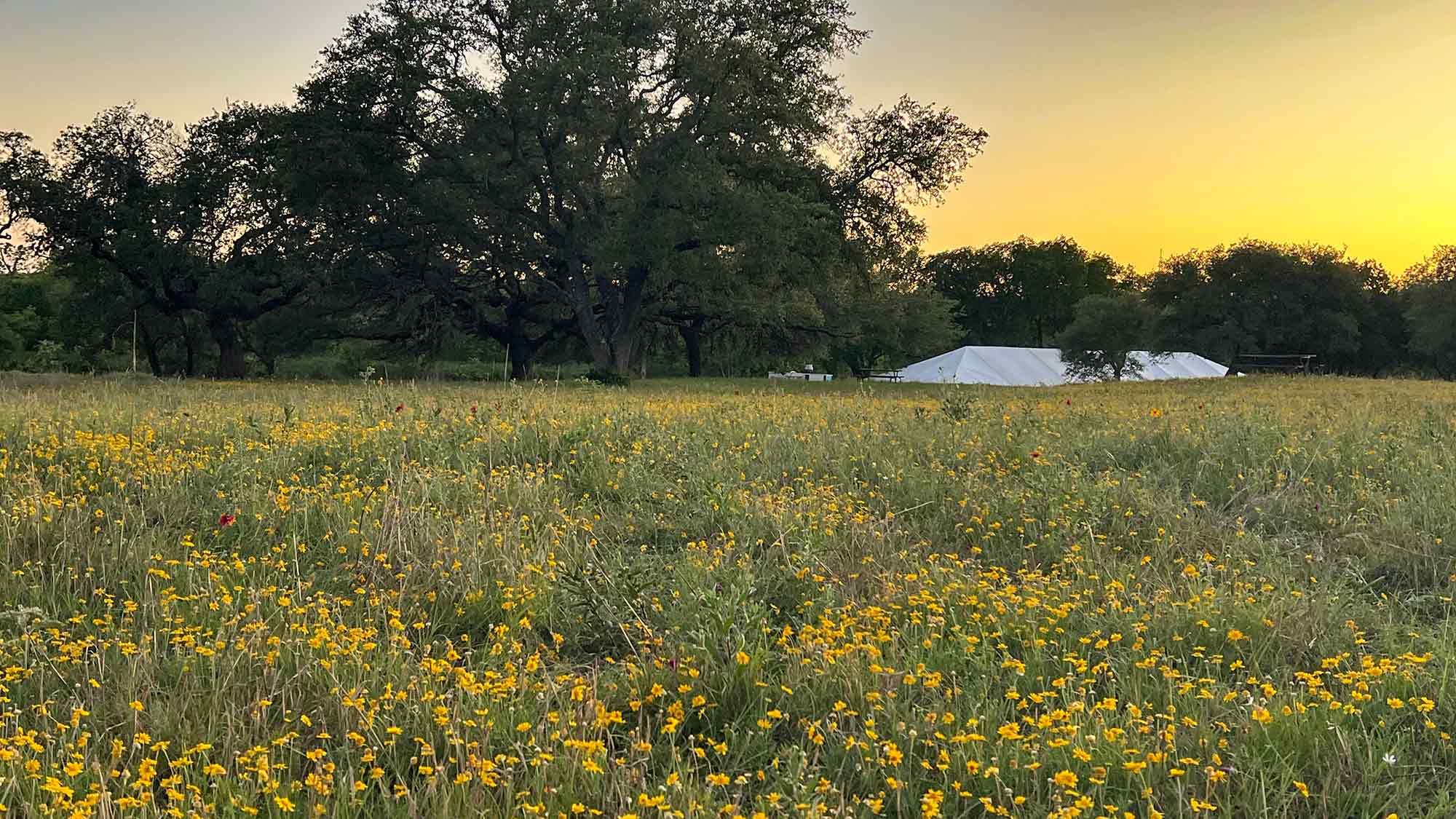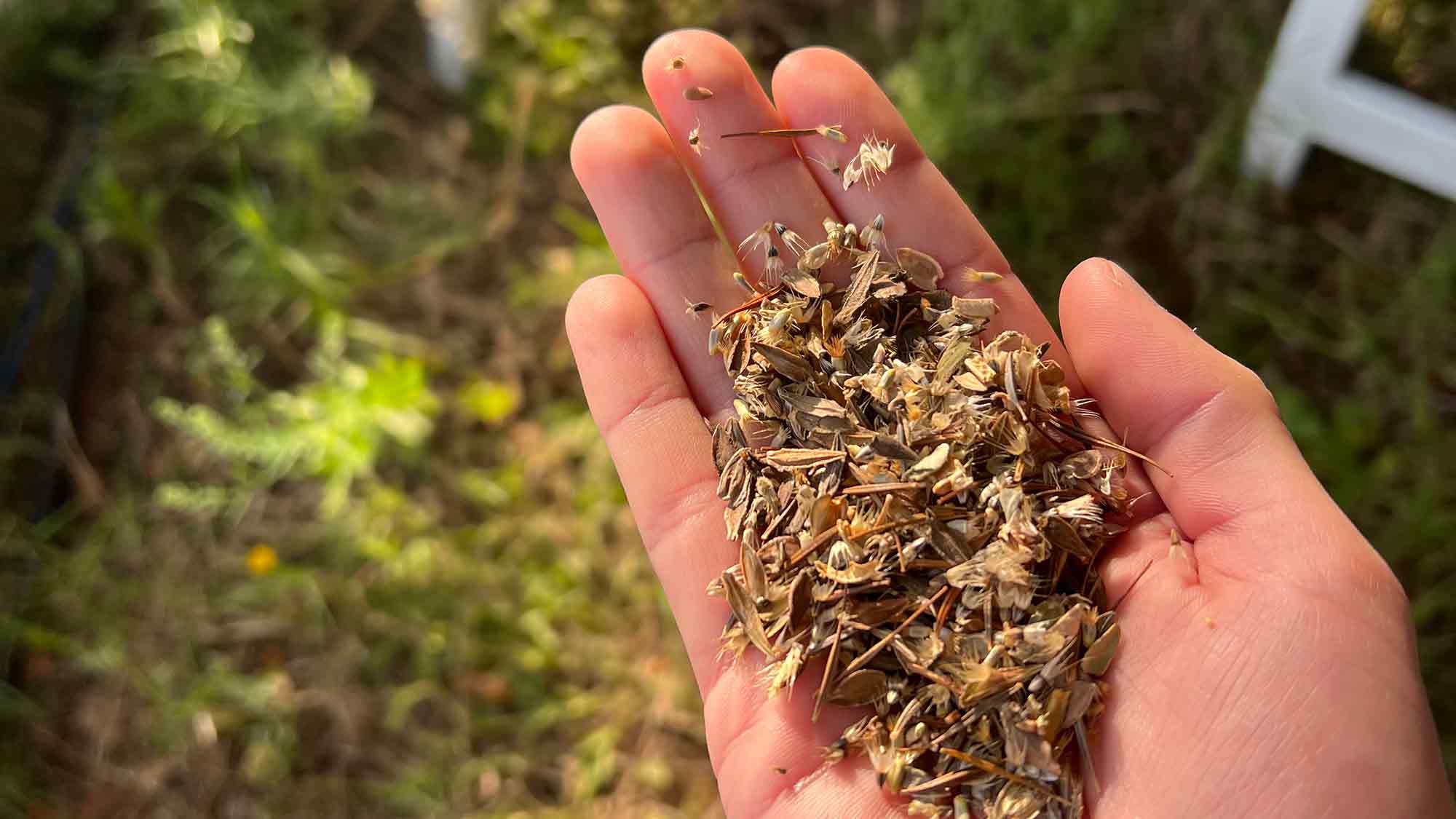On the rolling landscape of the Texas Hill Country, humans young and old gathered to explore the question of where hope grows.
A Regenerative Agriculture Conference at ROAM Ranch
Musings on Sowing the Seeds of Hope

05/21/2023
By: Megan Shahan
 On the rolling landscape of the Texas Hill Country, humans young and old gathered to explore the question of where hope grows. Surrounded by fields of wildflowers and flutters of butterflies, the sound of the river, laughter, and conversation, the soft embrace of the breeze and the warmth of the Texas sun, the sense of aliveness was palpable.
On the rolling landscape of the Texas Hill Country, humans young and old gathered to explore the question of where hope grows. Surrounded by fields of wildflowers and flutters of butterflies, the sound of the river, laughter, and conversation, the soft embrace of the breeze and the warmth of the Texas sun, the sense of aliveness was palpable.
What Good Shall I Do, a two-day regenerative agriculture conference at ROAM Ranch featured full-day panels of incredible speakers (speaker line-up and bios can be found at the conference link), a bison butchery demonstration, an NRCS rainfall simulator demonstration, nourishing food and community. Our hosts placed wildflower seeds on our tables before we arrived. In a collective, life-giving act we gathered the seeds in our hands, blessed them, and released them to the Earth, literally sowing the seeds of hope in our new community of humans, armadillos, barn owls, and the web of life around and within us.

What united us all was a longing for a deeper connection with Mother Nature and a desire to usher in a new paradigm of co-creation and regeneration. Taylor Collins of ROAM Ranch reminded us that this community—our energy—was the main event. We weren’t here just to appreciate the potential of regeneration, but to connect and pursue the vision for change that would make the 10-year-old version of ourselves proud. We were encouraged to remove our shoes and physically connect with the land, the life, beneath our feet; to observe, engage our senses—sight, taste, touch, smell, sound.
As we go from observing and participating in this web of life to describing with language, the feeling of aliveness is easily lost in translation. — Kate Kavanaugh
My attempts to synthesize the wisdom and intention of my experience at ROAM Ranch have repeatedly fallen short. It is not the specific words that matter—though my notebook is filled with them and my mind is replaying them still—it is the impact on our consciousness that matters. This perspective was shared by a speaker, Daniel Griffith, in the context of impossibly prescriptive purchasing protocols for cattle in the industrialized food system model, controlling for breed (black angus), age (24 months), and weight gain (3.1lbs/day, an unnatural rate at which diabetes sets in).
Another phrase that has remained with me is body wisdom. Anne Biklé, biologist, gardener, and author redirected a technical conversation about phytonutrients to a simple truth: How do you know what food is healthy for you? Pay attention to how your body feels when you eat. Your body knows. Your body is wise. Listen to the wisdom of your body. And act on it.

The wisdom of our bodies is no different from the wisdom of nature. We are nature. We are the Earth. I have spent three years reading, reflecting, and writing about regenerative agriculture. I have learned about how humans are applying principles of regeneration to economies and organizations. What has struck me most deeply is the innately spiritual nature of these endeavors. I frequently hear people point to the need for an evolution of human consciousness as the nexus of regeneration.
This is true in my experience. The lessons I have learned of ecology mirror the lessons of spiritual and Indigenous teachings thousands of years old, which mirror the lessons of modern-day quantum physics. Humans have long sought to understand the nature of reality, and our attempts to do so have reflected the vast creativity of the human brain, emerging as the disciplines of science, humanities, and religion.
Consilience is a word we use to describe when different disciplines come to similar conclusions independently, converging on stronger conclusions. Ultimately, ancient and modern ways of knowing point to the truth of interconnection, oneness, relationship. These are truths we can access intellectually from a range of disciplines and experience physically through the wisdom of our bodies, the wisdom of nature.
Judith Schwartz, author of numerous books filled with stories about climate, ecosystems, and grassroots change, shared about a time she felt restless as conversations about the transformation we need started to sound the same. Then, as she said, the obvious thing hit her: We collectively have the information we need to restore the Earth. Everything we are dealing with is people problems. We know we need to transform our agricultural, economic, and social systems—and systems are created by people.

I came to TomKat Ranch motivated by the need for climate action. I did not have a conscious relationship with my food or an understanding of complexity, and I felt decidedly separate from the living world. In fact, I was conditioned to fear that which was wild and unknowable, to seek refuge in a false sense of certainty and control. All of this was alive in me during my time at ROAM Ranch; as was a deep longing to be in and of nature, to shed this false sense of separation and immerse myself in the beauty, awe, and mystery of life around me and within me.
I wonder how many of us feel this sense of fear, of separateness, and believe that it is proof we are indeed separate? I wonder still how many of us are aware of this fear and the sources of this belief—hundreds of years of colonization, patriarchy, mechanization of life: words we use to describe various forms of control, dominion, exploitation, extraction, reductionism. Actions that are ultimately rooted in fear of the unknown, the wild and untamed. A grasping for control and certainty in a world full of mystery.
When was the last time you stood in the land and asked, “What do you want to be?” If it were to answer, could you hear it? — Daniel Griffith
Regeneration asks us to understand the truth of interconnection. And regeneration asks us to embody this truth. To act on it.
My time at the conference planted a seed in me. Joel Salatin spoke of how participation creates freedom. Kate Kavanaugh—butcher, storyteller, and guide of mind, body, and soil—took us on a journey through deep time and the lifecycle of a little bluestem seed. This single seed that we perceive as one is really many, carrying with it every relationship that has come before.
Kate also invited us to reflect on what hope feels like in our bodies; where in our bodies does it live? Does hope have a taste, a color? Perhaps it feels luminous, buoyant, light, smells like grass after the rain, a shade of pearl, its experience like Spring bubbling up mysteriously in the chest.
My body carries this seed, this hope, this call to participate, to connect, to live. How this seed will bloom is one of the wonderful mysteries of life. I close this article with the message Daniel Griffith shared to close the conference: Be the solution. Fill the need. Walk to your local farm and help. Be the relationship. Be the harmony. Look down at your feet; start there, change that.